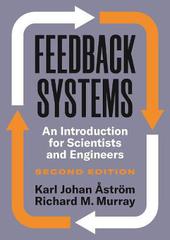
|
Feedback Systems: An Introduction for Scientists and Engineers, Second Edition
Hardback
Main Details
Description
The essential introduction to the principles and applications of feedback systems - now fully revised and expanded This textbook covers the mathematics needed to model, analyse, and design feedback systems. Now more user-friendly than ever, this revised and expanded edition of Feedback Systems is a one-volume resource for students and researchers in mathematics and engineering. It has applications across a range of disciplines that utilise feedback in physical, biological, information, and economic systems. Karl Astroem and Richard Murray use techniques from physics, computer science, and operations research to introduce control-oriented modelling. They begin with state space tools for analysis and design, including stability of solutions, Lyapunov functions, reachability, state feedback observability, and estimators. The matrix exponential plays a central role in the analysis of linear control systems, allowing a concise development of many of the key concepts for this class of models. Astroem and Murray then develop and explain tools in the frequency domain, including transfer functions, Nyquist analysis, PID control, frequency domain design, and robustness. Features a new chapter on design principles and tools, illustrating the types of problems that can be solved using feedback Includes a new chapter on fundamental limits and new material on the Routh-Hurwitz criterion and root locus plots Provides exercises at the end of every chapter Comes with an electronic solutions manual An ideal textbook for undergraduate and graduate students Indispensable for researchers seeking a self-contained resource on control theory
Author Biography
Karl Johan Astroem is senior professor of automatic control at Lund University in Sweden. His books include Adaptive Control, Introduction to Stochastic Control Theory, and Computer-Controlled Systems. Richard M. Murray is the Thomas E. and Doris Everhart Professor of Control and Dynamical Systems and Bioengineering at the California Institute of Technology. He is the coauthor of A Mathematical Introduction to Robotic Manipulation.
|